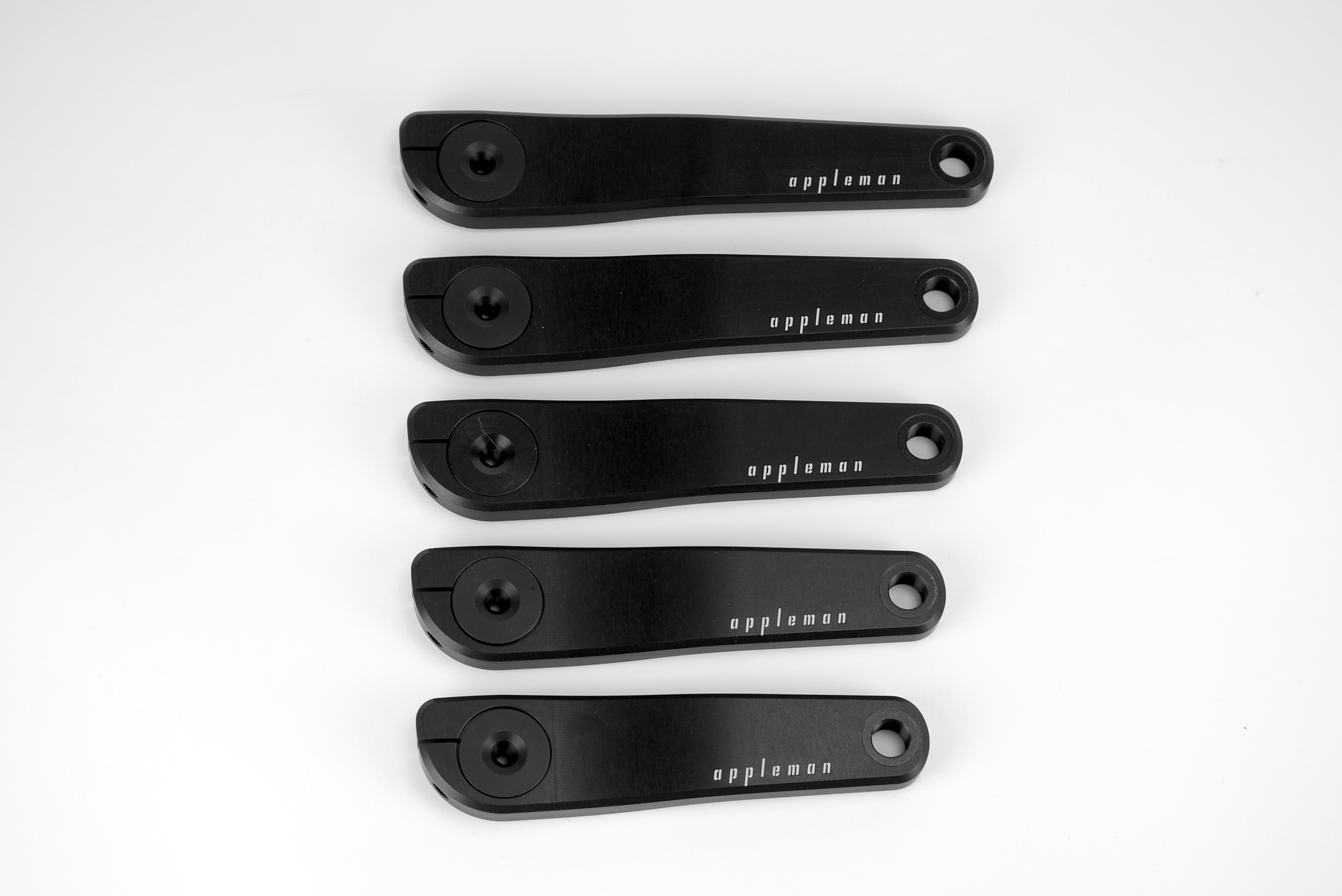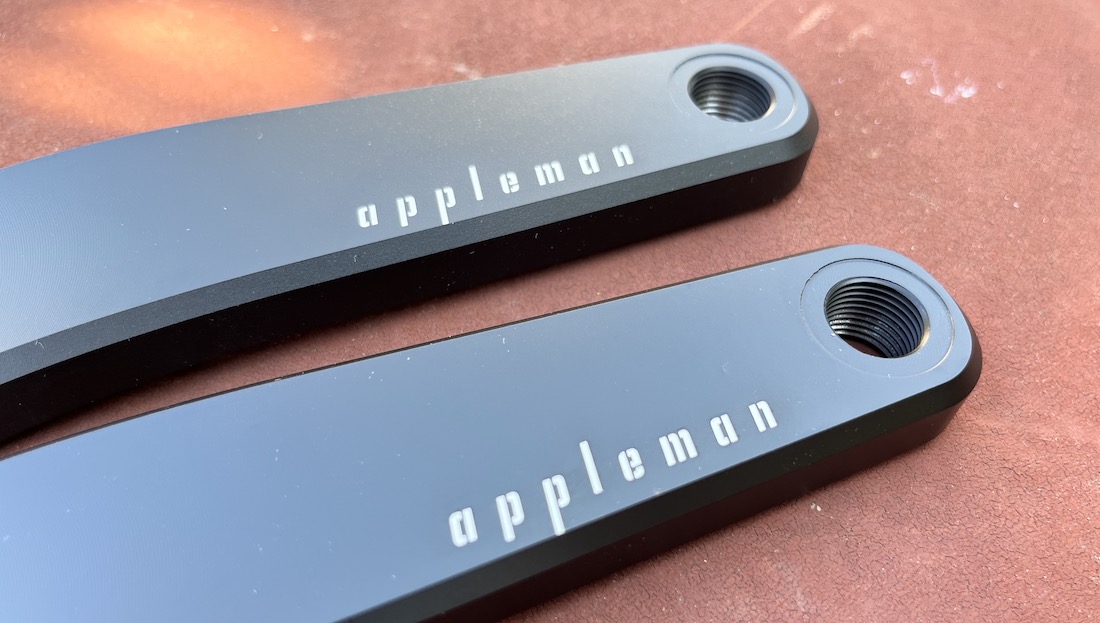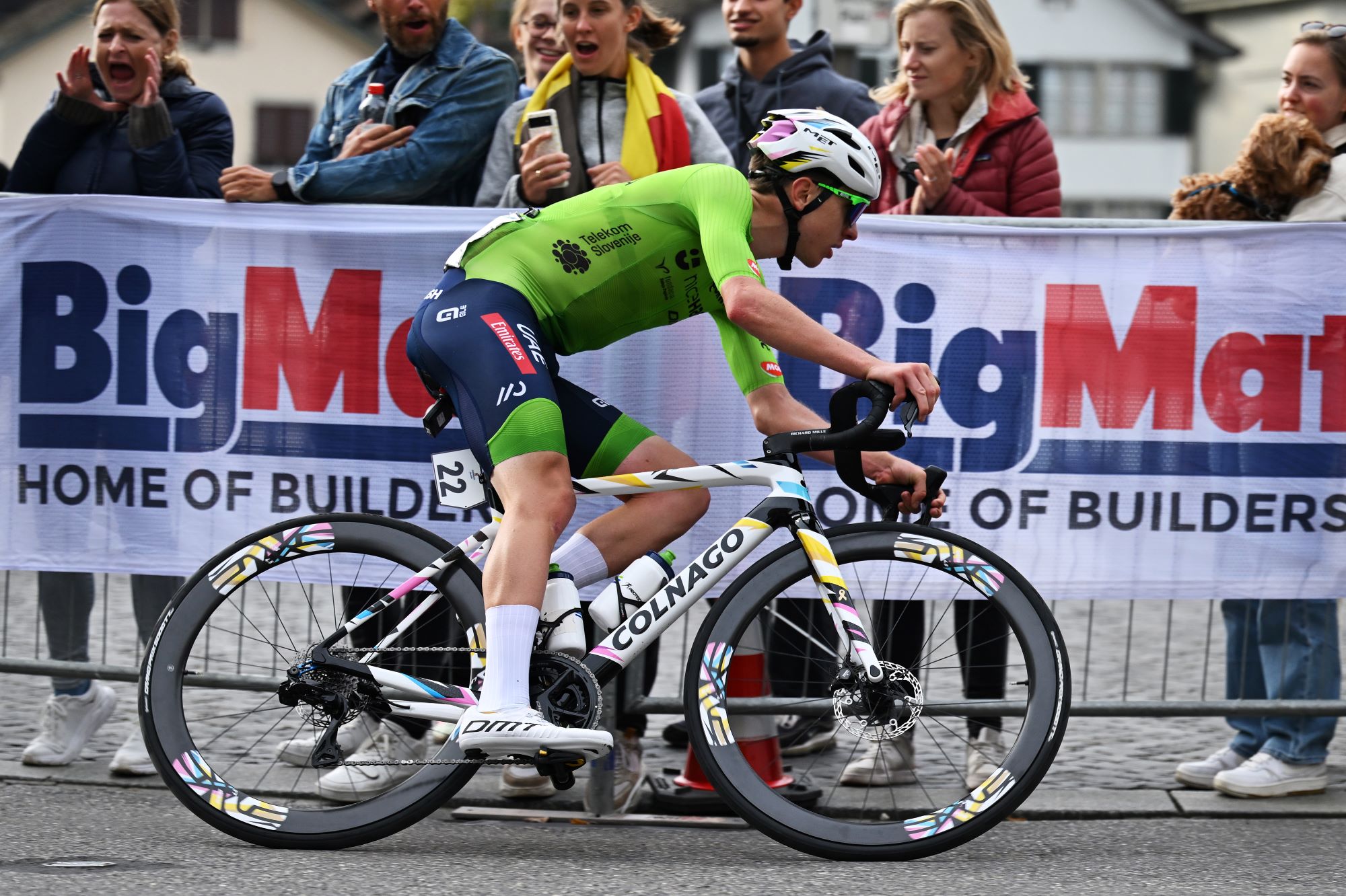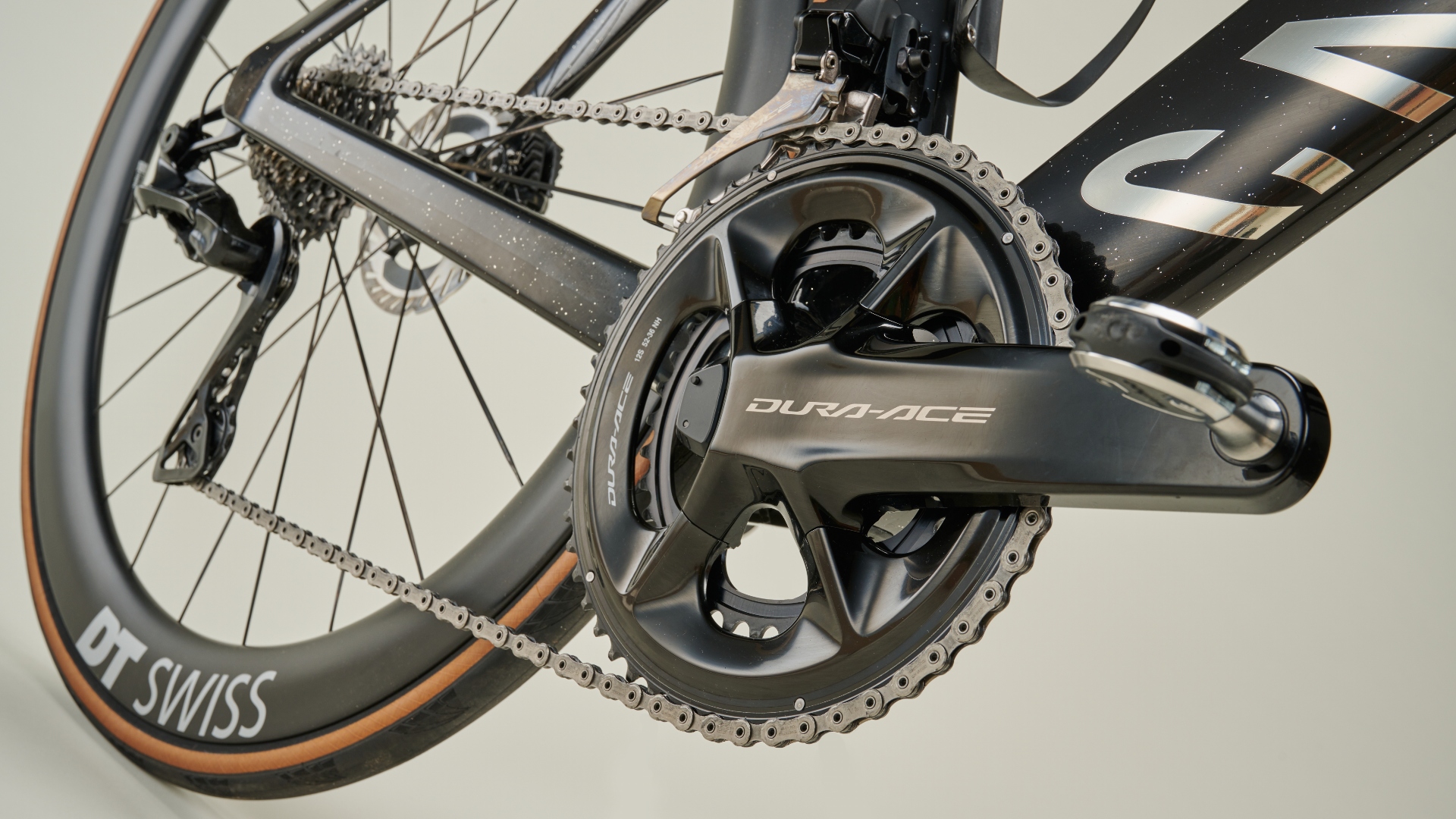Tadej Pogačar is presently the finest male rider on this planet, so it’s no shock that folks take note of the bike he rides. If he’s capable of win the Giro d’Italia, Tour de France and World Championships in a single season, absolutely he’s obtained one thing found out?
It seems he does: Pogačar has a brand new, much more highly effective place on the bike as of final season. When he first joined the World Tour, his place was that of a typical professional—slammed stems paired with a setback seatpost. In current seasons, he has moved ahead on the bike, using a straight seatpost with a extra ahead saddle place and an extended and better entrance finish. This place, very possible developed with the assistance of a wind tunnel, rotates his physique ahead across the backside bracket and shares similarities along with his TT setup. One key to it’s Pogačar’s use of shorter crank arms—165 mm, to be exact.
Pogačar isn’t the one one making this modification. Shorter cranks are very a lot in vogue. However crank size has been an missed facet of motorbike becoming for a very long time, and a reexamination of standard knowledge appears warranted. Manufacturing bikes can be found for riders from beneath 155 cm (5 ft) as much as round 200 cm (6.5 ft) tall, however crank arms can be found solely in an especially small vary. Does it actually make a lot sense to place brief folks and tall folks on crank arms which can be solely a centimetre totally different in size?
Why use shorter cranks?

(Picture credit score: Appleman Bicycles)
It’s a gross understatement to say that crank size has an influence on bike match. Crank size may be the most necessary facet of motorbike match, because it impacts every part else in such a drastic approach. With that mentioned, most individuals can trip a spread of crank arm sizes with out difficulty. The science additionally says that different-length crank arms don’t considerably influence energy output.
Nonetheless, longer cranks require bigger diameter rotations, which signifies that hip and knee angles are sharper all through the pedal stroke. That is usually a supply of ache or discomfort. Massive pedal circles may also trigger pelvic rocking, particularly if hip mobility is a matter. This will create saddle sores or decrease again ache.
Shorter cranks, alternatively, assist alleviate these issues by retaining the motion smaller and extra comfortably inside the vary of movement for extra folks. A extra open hip angle makes holding an aerodynamic place simpler and retains your thighs from hitting your torso whereas in an aggressive stance on the bike.
One other vital good thing about shorter cranks is pedal clearance. Criterium and monitor racers have recognized this secret for some time, however brief cranks assist you to pedal by means of corners, an enormous benefit whereas racing.
The most recent race content material, interviews, options, critiques and professional shopping for guides, direct to your inbox!
To seek out your optimum crank size, learn our information right here.
Checking in with an professional

(Picture credit score: Anne-Marije Rook)
Biking Weekly spoke with body builder Matt Appleman, of Minnesota about all issues crank size. Appleman has been a proponent of brief cranks since first experimenting with them again in 2014. He has grow to be a go-to useful resource inside the trade on this subject and likewise produces his personal line of cranksets, ranging in lengths from 135 mm as much as 175 mm.
(The dialog has been edited for size and readability)
Biking Weekly: To what do you attribute altering perceptions on crank size?
Matt Appleman: Availability and compatibility of shorter cranks was fairly restricted [until] just a few years in the past. The mixture of motorbike fitters preaching the advantages of shorter cranks, the media listening to it and the supply of shorter cranks [have] all helped shine the highlight on crank size.
CW: Are there any sudden results of switching to shorter crank arms?
MA: One shocking factor I hear from clients is how pure shorter cranks really feel when switching between bikes. Riders go on just a few rides with the shorter cranks they usually like them, however they seem to be a bit ho-hum about it. Then they trip a motorcycle with longer cranks and really feel horrible. They can not get excessive of the pedal stroke, or it feels tough to face and pedal and [creates] a basic sense of “not feeling proper.”
CW: What measurement crank arms do you assume most individuals ought to use?
MA: I feel that 170-175 are nice crank lengths, however for the taller finish of the rider spectrum. 155 mm is about common and would match the most individuals and 135-145 [is about right] for these on the shorter facet.
CW: Have you ever discovered the decrease restrict by way of size?
MA: I by no means advocate going brief only for the sake of going brief, [but] going too lengthy is much more of a tough restrict than going too brief. For those who’re on too lengthy of a crank, you lose hip stability which is the very core of a robust pedal stroke. With a shorter crank, your physique stays inside its attain and suppleness limits and your core stays secure.
When you get to extraordinarily brief cranks (lower than 100 mm or so) they grow to be a bit much less sensible and it’s possible you’ll begin dropping some velocity. It is necessary to notice that velocity and energy come from the rider, from inside, not from crank size. If leverage received bike races, we might all be on 400 mm cranks.
CW: Do you assume bicycle design will change as shorter crank arms unlock unexplored potentialities?
I hope so! There’s an entire world of higher bike match and bike dealing with that is attainable while you design round crank size. A big-sized body with 170 mm cranks [provides] a reasonably good match. Something smaller can profit from a complete revamp of crank size and geometry: decreasing the underside bracket, shortening the highest tube, and slackening the seat tube angle, that are all issues that can profit most riders.
CW: Do you assume there are different points of bicycle design which can be ripe for reevaluation?
MA: Biking is a really conventional sport. The trade will get weighed down by historical past and aesthetics and would not at all times have the pursuits of the rider in thoughts. [For example] the biking world glorifies ache. I feel it is an necessary distinction that not all ache and struggling on the bike is nice or wholesome. Chosen ache, like going laborious, pushing your limits is nice, when you’re into that. Saddle sores, numbness within the fingers or nether areas, foot ache, that is not regular. It is not wholesome.
CW: Lastly, what do you concentrate on Pogačar utilizing shorter crank arms?
MA: 165s could also be a hair lengthy for him. It is nice to see crank size within the information and the way efficiency would not lower with much less leverage.
And now for the testing portion

(Picture credit score: Getty Photos)
Like each different bicycle owner, I wish to know what Tadej feels when he turns the pedals. So, I set about looking for 165 mm crank arms like his. Nonetheless, I usually trip 170 mm cranks, per the advice of a motorcycle fitter a number of years in the past, that are already on the shorter facet for somebody my top (182 cm).
It seems that 165 mm crank arms aren’t very simple to seek out proper now. My contact at Shimano didn’t count on to have any accessible till late February, and commented on how unusually common they’re in the meanwhile. Ultimately, I used to be capable of monitor down some used crank arms and swapped them onto my bike. To compensate for the size distinction, I raised my saddle 5 mm and moved it ahead barely. For a extra everlasting swap, I may also think about adjusting my handlebar top and probably cleat place as effectively.
My preliminary impressions had been muted, as Appleman predicted: brief cranks really feel good, however not revolutionary (pun supposed). They inspired a excessive cadence and felt comfy. A lot to my disappointment, I didn’t instantly grow to be a risk to win the Tour de France (my energy meter independently confirmed this).
I anticipated to overlook the leverage on the steepest hills I trip—there are a number of on my typical coaching loop in extra of 12 per cent—however discovered that whereas leverage was certainly missing, the rise in leg velocity created by the smaller pedalling rotation greater than compensated for it. Actually, I discovered that it was simpler to rise up steep pitches with shorter crank arms.
The true take a look at was switching again to my typical 170s. So as to do that with the minimal quantity of noise, I did back-to-back rides on related routes with totally different crank lengths. Certain sufficient, switching again made me really feel like a new child giraffe: ungainly and a little bit discombobulated. It appeared to take an undue quantity of effort to finish a full rotation of the pedals. By the tip of my loop, I had readjusted as soon as once more, however I missed the sensation of easy acceleration supplied by the shorter crank arms. Switching backwards and forwards on subsequent rides confirmed these impressions. Will I make the change completely? We’ll see.
Conclusion

(Picture credit score: Future)
Although brief crank arms would possibly look like a fad, they’re right here to remain. For no matter cause, biking appears to have a preponderance of traditions which have endured, regardless of being detrimental to efficiency. It takes experimentation, braveness, and laborious science to seek out new methods ahead, however as we’ve realized, tackling previous methods of pondering can create extra consolation and extra velocity.
The advantages of brief crank arms are plentiful. They’re not for everybody—the tallest amongst us are effectively served by conventional crank lengths, however for common top and shorter riders, shorter cranks can unlock new potentialities on the bike.
Pogačar shouldn’t be the one professional making the change to shorter cranks. It appears to be half of a bigger image of evolving bike matches. In an effort partially influenced by aerodynamics, riders are in search of extra compact positions on the bike, and brief crank arms are an integral a part of this evolution.
Like Tadej, I’m a fan of brief cranks. Are brief cranks best for you?
